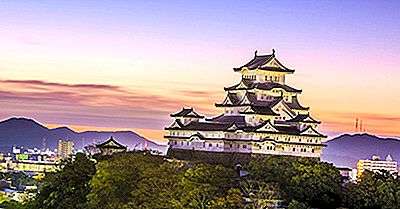Throughout history, palaces have been built for royal families, heads of state and others in positions of power. Most of the world’s remarkable buildings are located in Asia and Europe and were once occupied by powerful emperors and kings. Today, very few of these symbols of power are still occupied by the royal families who once owned them. Most have been converted into museums and serve as major tourist attractions. Here are ten beautiful palaces from around the world.
10. Potala Palace
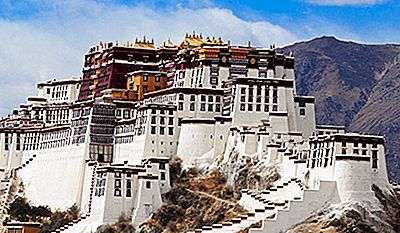
The Potala Palace in Tibet.
The Potala Palace in the Lhasa Valley, Tibet, was built in 1645 during the reign of the Fifth Dalai Lama. It has its source in a palace erected by Songtsän Gampo in the seventh century. The White Palace (Potrang Karpo) was built in 1648, while the Red Palace (Potrang Marpo) was built between 1690 and 1694. The palace was occupied by the Dalai Lama until the 14 th The Dalai Lama was expelled from Tibet. The palace measures 1315 from west to east from 1148 from north to south. It rises 384 ft at the top of the red hill and 1,000 ft from the bottom of the valley.
9. Alhambra
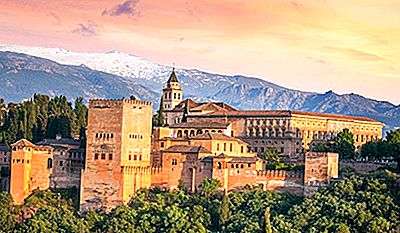
Alhambra Palace, Spain.
The Alhambra Palace is located in Granada, Spain, and was originally built in AD 889. It was left in ruins until the 12th century when the Moorish emir Mohammed ben Al-Ahmar rebuilt it. In 13 Yusuf I, the Sultan of Granada rebuilt it and transformed it into a palace. It is a testimony to Muslim craftsmanship because it is partly a fortress and it is also a palace surrounded by a beautiful garden. At first it was whitewashed, but centuries of cooking with sunlight makes it look reddish. It is located on a hill which makes it visible from various parts of the city and is currently one of the main tourist attractions of Spain.
8. Grand Palais Bangkok
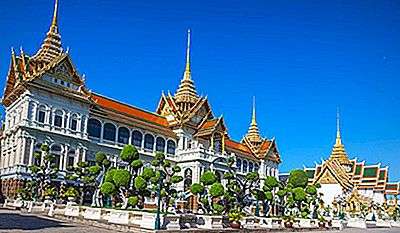
The Grand Palace in Bangkok, Thailand.
The Grand Palace is located in Bangkok’s Old City, on the banks of the Chao Phraya River. It is a spectacular but sacred site, construction of which began in 1782 by King Rama I. The palace is protected by a 6,233 ft long wall and includes the royal residence and the temple of the Emerald Buddha. It served as the nerve center of the Kingdom, housing the government and the royal court. Today it is still considered a sacred place and is used for various royal rituals and official state functions. The Borom Philam manor, built at the beginning of the 20 thcentury, by King Rama V, imitates the Western style of construction to accommodate future leaders. There are strict guidelines for those who visit the palace, including the dress code which states that short pants, sleeveless shirts and any form of shoes are not allowed in the temple.
7. Schönbrunn Palace
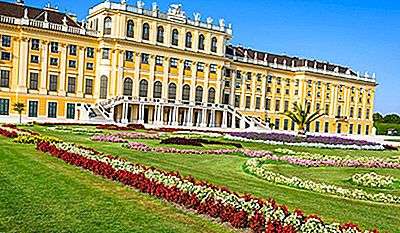
Schönbrunn Palace in Vienna, Austria.
Schönbrunn Palace is one of the main tourist attractions in Austria. It was built between 1696 and 1712 by the emperor Léopold Ier before being transformed into summer palace by Marie-Thérèse. It contains 1,441 rooms and has been compared to the grandeur of Versailles. It is home to several other attractions, including the world’s oldest zoo, the private carved garden, a labyrinth and the Gloriette. It was listed as a UNESCO World Heritage Site in 1996 and is managed by the Schloss Schönbrunn Kultur- und Betriebsgesellschaft mbH (Ltd).
6. Buckingham Palace
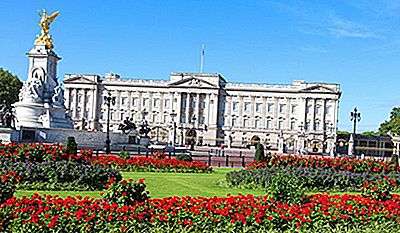
Buckingham Palace in London, England.
The Buckingham Palace in Westminster, London serves as the residence and administrative center of the monarch of the United Kingdom. The original building was built in 1703 for the Duke of Buckingham before King George III bought it for Queen Charlotte in 1761. It was renovated and other wings were built in the 12th century before Queen Victoria moved there at 19. Today it is a symbol of British unity, in particular the royal balcony on the eastern front, where the royal family gathers to welcome the crowds. It is visited by thousands of tourists each year – it is open to the public in summer and access is limited in December, January and Easter.
5. Peterhof Palace
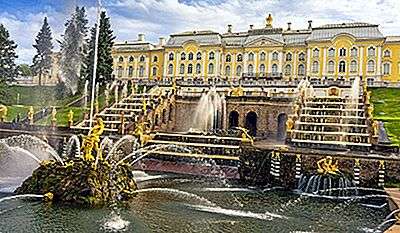
Peterhof Palace, Russia.
The Peterhof Palace in Saint Petersburg, Russia, consists of a series of palaces and beautiful gardens. For these reasons, it is sometimes called the “Russian Versailles”. The three most attractive features of the series are the Grand Cascade and Samson fountain, the lower gardens and the grand palace. The grand palace was built by Pierre the Great in the early 18 th century. The interiors were rebuilt after World War II and represent a combination of modern designs during the reign of Catherine the Great. Tourists visiting the palace are greeted by an ornate ceremonial staircase and a multitude of golden statues.
4. Neuschwanstein Castle
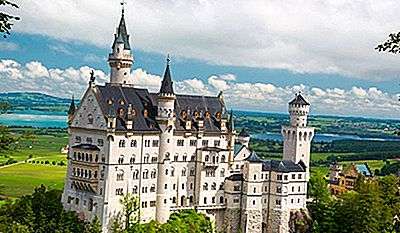
Neuschwanstein Castle in Bavaria.
Neuschwanstein Castle in Bavaria, Germany, was built by Ludwig II of Bavaria in tribute to Richard Wagner and was to be the palace of the king. Ludwig admired Wagner, and several rooms in the castle were inspired by Wagner’s character. The interiors of the third and fourth floors are designed from Wagner’s operas. Unlike the old castles, Neuschwanstein Castle was at the cutting edge of technology, equipped with automatic flush toilets, air conditioning systems and running water. It has a beautiful garden surrounded by an enclosed courtyard and an artificial cave. It is the most visited castle in Germany with more than X million tourists a year.
3. Himeji Palace
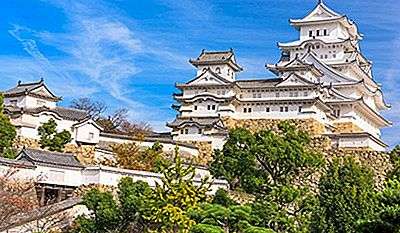
Himeji Palace, or Himeji Castle, Japan.
Himeji Palace represents classic Japanese architecture. It is located on a hill and was built in the 12th century. Since its initial construction, it has undergone major renovations with minor restorations also carried out in 14. Tourists enter the castle through the Otemon gate, bordered by cherry trees suitable for taking photos. At the heart of the palace is a six-story wooden building with a winged roof that serves as a landmark for the castle. Visitors visit the floors using a series of steep stairs, each floor becoming smaller as you go up. The top floor houses a sanctuary and presents a 2015 0 view of the city.
2. Palace of Versailles
Himeji Palace, or Himeji Castle, Japan.
Himeji Palace represents classic Japanese architecture. It is located on a hill and was built in the 12th century. Since its initial construction, it has undergone major renovations with minor restorations also carried out in 14. Tourists enter the castle through the Otemon gate, bordered by cherry trees suitable for taking photos. At the heart of the palace is a six-story wooden building with a winged roof that serves as a landmark for the castle. Visitors visit the floors using a series of steep stairs, each floor becoming smaller as you go up. The top floor houses a sanctuary and presents a 2015 0 view of the city.
2. Palace of Versailles
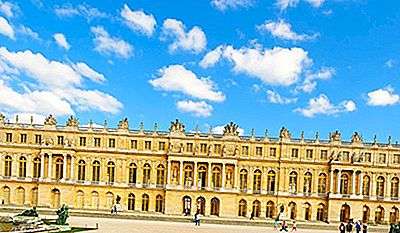
The Palace of Versailles in France.
The Palace of Versailles, known locally as the Palace of Versailles, was built in the 12th century in the Île-de-France region in France. It was used as a royal palace until the French Revolution ousted King Louis XV. In 11, it was converted to the Museum of the History of France. Today, it is the most popular museum, welcoming around five million tourists each year. Besides the magnificent building, the adjacent garden is also a major tourist attraction with around 1,837 million walking into the garden each year. Other attractions of the palace include the chapels of Versailles, the Royal Opera House and the King’s apartment.
1. Mysore Palace
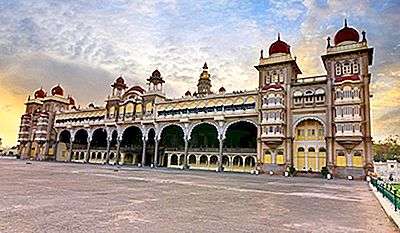
Mysore Palace, India.
Mysore Palace is located in Mysore, in the south of India. The building was built at the beginning of the 12th century but underwent major reconstructions as different leaders took power. The current building was constructed between 14 and 1897 after the destruction of the previous building. It presents an Indo-Saracenic style which represents a mixture of Muslim, Hindu Rajput and Gothic architecture. It includes a three-story stone structure with marble domes on the roof, as well as a five-story tower. Among the most visited rooms in the palace are Ambavilasa, Gombe Thotti (doll’s pavilion) and Kalyana Mantapa. During the Mysore Dasara festival, approximately, 1912 bulbs illuminate the palace and attract up to 100 annually,

